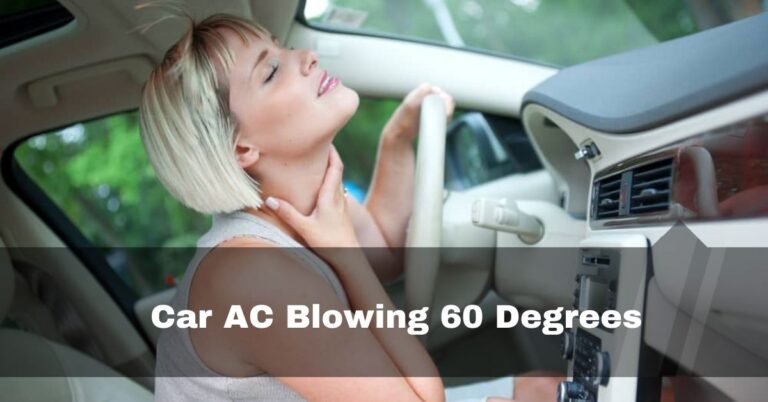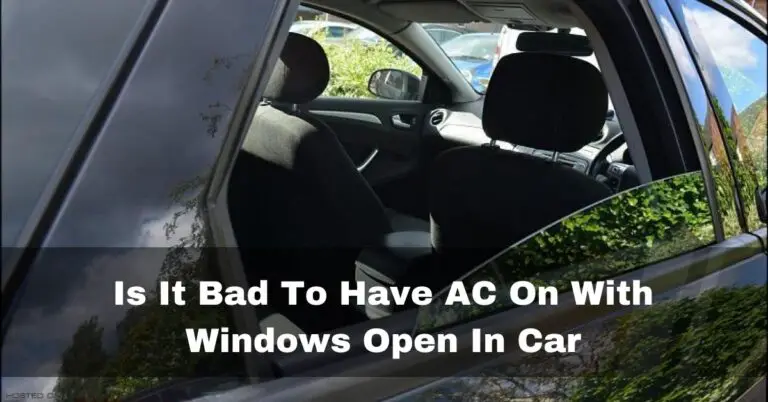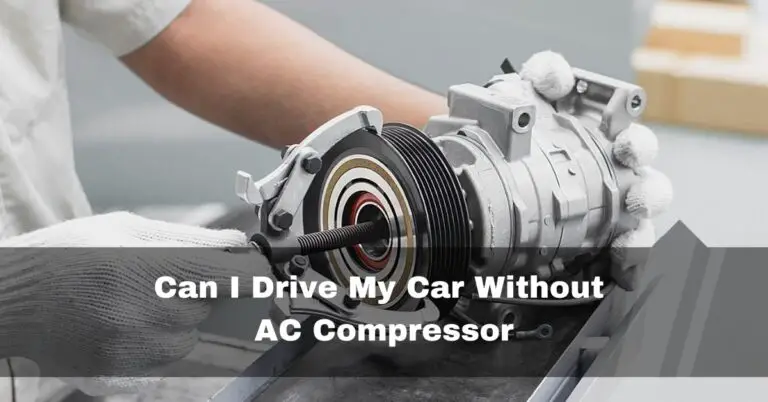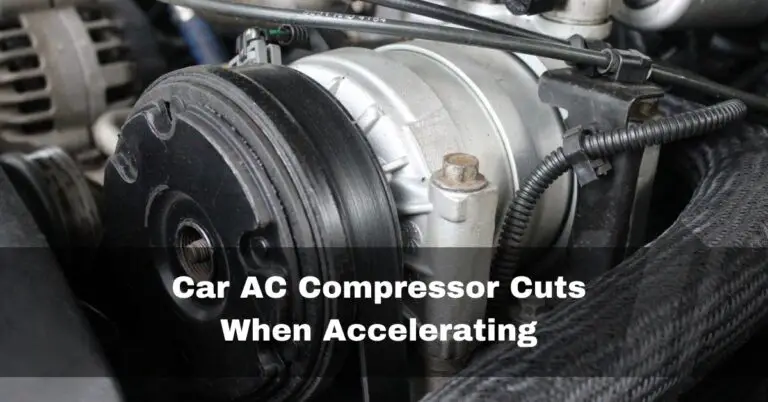Car Temperature Gauge Stays On Cold And AC Not Working – 2023
One common issue that can arise is when the car’s temperature gauge remains stuck on cold, and the air conditioning (AC) system fails to provide the expected cooling relief. This combination of symptoms can be perplexing and concerning.
AC won’t cycle when ‘cold’; usual—the problem’s the temp sensor circuit. Fans run as the ECM lacks sensor input, assuming heat. Battery disconnect fixes it by resetting the ECM (engine control module).”
Understanding the underlying causes and their potential solutions can help drivers address the problem effectively.
Table of Contents
Causes Behind Car Temperature Gauge Stays On Cold And AC Not Working:
1. Issues In The Temperature Sensor Circuit:
The temperature gauge is an essential part of a car that informs the driver of the engine’s operating temperature. The temperature of the engine coolant is continuously monitored by an engine coolant temperature sensor (ECT sensor), which is connected to this gauge.

While this happens, the indicator may display a task “cold” indication even while the engine is functioning at average operating temperatures. A break or short in the circuit can disrupt the information flow, resulting in this deceptive appearance.
2. Faulty Engine Coolant Temperature Sensor (Ect Sensor):
The Engine Coolant Temperature Sensor is faulty. As the AC system depends on correct temperature data for effective operation, this miscommunication may cause the temperature gauge to display a consistently “cold” reading. The temperature sensor gives false readings.
3. Damaged Wiring In The Engine Compartment:
The temperature gauge and the air conditioning system are just two electrical systems that are seriously at risk from the gauge’s breakage and damaged wiring in the engine area.

The uninterrupted passage of electrical impulses can be disrupted when the engine temperature sensor or associated wiring is failing, chafed, or exposed due to wear or outside influences. This interference can affect the operation of the AC system, which will reduce cooling performance and result in erroneous temperature gauge readings.
4. Damaged Or Defective Temperature Gauge/Cluster:
A broken temperature gauge can cause inaccurate temperature readings, part of the dashboard cluster. It might happen due to internal deterioration, technological problems, or other gauge-specific flaws.
Confusion and potential problems with engine monitoring can result from the gauge’s damaged state, which causes it to reflect the engine’s actual temperature inaccurately.
5. Corrosion Of Plugs Or Connectors:
Electrical connections may gradually be compromised by corrosion, a typical outcome of moisture exposure. Corroded plugs and connectors connected to the temperature sensor and gauge impede the smooth passage of electrical impulses. This interference might cause the AC system to malfunction and cause inaccurate temperature readings, impairing the entire vehicle’s functionality.

6. Stuck Thermostat:
The ability of the engine to reach its ideal operating temperature is interfered with by a jammed thermostat, which is frequently trapped in the closed position. Malfunctioning your thermostat, the temperature gauge will show lower readings than the actual temperature, which limits adequate coolant circulation. This problem can damage engine performance and efficiency and impair precise temperature monitoring.
7. Presence Of Air In The Cooling System:
The smooth circulation of coolant might be hampered by air pockets or bubbles in the cooling system. As a result, the engine’s ability to regulate temperature is hampered, producing false temperature gauge readings.

Additionally, air bubbles in the cooling system might reduce the effectiveness of the AC system, which will damage performance and general comfort.
8. Damaged Or Defective Engine Control Unit (Ecu):
The vehicle’s “brain,” known as the Engine Control Unit (ECU), is in charge of receiving and analyzing data from sensors like the temperature sensor.
Incorrect temperature readings on the gauge can occur when the ECU is compromised due to damage or faults, which can cause a breakdown in communication between sensors and the vehicle’s systems.
How To Fix Car Temperature Gauge That Stays On Cold And AC Not Working?
1. Inspect Temperature Sensor Circuit:
Get a multimeter, a wrench, pliers, wire strippers, electrical tape, and other items to deal with the problem. Put safety first by shutting off the engine, taking the key off the ignition, and unplugging the battery.

Located close to the thermostat housing is the ECT sensor. Look for flaws, exposed wires, wounds, or burns in the wiring. Lock down all connectors. To check the continuity of wires, use a multimeter. Cut away damaged areas, strip wire ends, and then insulate with tape or heat-shrink tubing to make repairs.
Start the engine, reconnect the battery, and check the gauge’s accuracy. You can avoid future issues by routinely checking and securing the wiring harness. In roughly 100 words, these methods help to fix the problem, guarantee correct temperature readings, and ensure gauge performance.
2. Replace With A Compatible, High-Quality Ect Sensor:
It’s crucial to swap out the damaged ECT sensor for a new one suitable for your car’s make and model to remedy this problem. To guarantee dependable and precise temperature readings, use a high-quality replacement.
To avoid future issues and preserve optimum engine and cooling system performance, a properly working ECT sensor ensures that the temperature gauge and the AC system perform as intended.
3. Thorough Wiring Inspection And Repair:
Carefully examine each piece of wiring in the engine area to solve this problem. Look closely for any apparent damage, chafing, exposed wires, or other signs of wear. If such issues are found, replacing or rapidly repairing the damaged wiring is critical.

By doing this, you may ensure correct temperature measurements and enable the AC system to function correctly by restoring proper electrical signal transmission. The overall dependability of your vehicle’s systems is improved by routinely maintaining and protecting the wiring in the engine compartment.
4. Professional Diagnosis And Repair/Replacement:
It is advised to seek professional assistance if the temperature gauge is considered an issue. To correctly identify the problem, speak with a trained expert or mechanic. They can decide if the gauge needs to be fixed or replaced.
They will advise on the best action to take to restore accurate temperature readings based on the gauge’s state. Relying on experienced knowledge provides accurate diagnosis and efficient gauge functionality restoration, providing adequate engine monitoring and safe driving.
5. Cleaning And Maintenance:
Cleaning the plugs and connectors for the temperature sensor and gauge will solve this problem. To properly dissolve and remove corrosion, use an appropriate contact cleaner. This procedure aids in re-establishing a trustworthy and robust electrical connection.

These connections can avoid future corrosion-related issues by being routinely inspected and maintained, assuring accurate temperature data and optimum AC system performance. This proactive strategy helps prolong component lifespans and provide a trouble-free driving experience.
6. Proper Cooling System Bleeding:
Bleeding the cooling system is necessary to eliminate the trapped air and solve this problem. Go to the owner’s manual for instructions on adequately bleeding your car. Ask a qualified mechanic who can expertly bleed the system for help if you need more clarification.
An adequate bleed guarantees precise temperature measurements, ideal coolant circulation, and effective AC operation. By removing air pockets, you can keep the cooling system healthy and improve your driving experience.
7. Expert ECU Diagnosis And Repair/Replacement:
It is crucial to involve a qualified mechanic or technician if the ECU is the primary culprit. They have the knowledge and equipment to diagnose problems with the ECU. Depending on their analysis, they will either suggest replacing the ECU or having it repaired.

Relying on experts assures a clear diagnosis, the right course of action, the restoration of reliable sensor communication, and the maintenance of trustworthy vehicle performance.
8. Thermostat Replacement And Maintenance:
Replace the broken thermostat with a new one to remedy the problem. Accurate gauge readings and adequate engine temperature regulation are both guaranteed by a working thermostat. In addition, regular cooling system maintenance is essential to averting such issues in the future.

Frequent coolant changes and system inspections help keep engines in top operational condition, prevent thermostat-related problems, and promote efficient engine performance.
FAQs:
1. Can A Temperature Sensor cause the AC Not To Work?
The AC system may need help to keep the cabin cool and pleasant if the ambient temperature sensor malfunctions or transmits an inconsistent signal.
2. How Do I Reset My Temperature Gauge?
Disconnect your car’s battery for a while to reset the temperature gauge. To re-calibrate the gauge, reconnect the battery and start the engine. Consult a specialist for a more thorough analysis if the problem continues.
3. How Do I Know If My Thermostat Is Stuck Open?
Examining the outlet radiator hose is one way to determine whether the thermostat is jammed open. The hose should be kept cold until the engine reaches operating temperature because there shouldn’t be any coolant circulation while the engine is warming up. It is most likely jammed open if it comes to the same temperature as the inflow hose throughout the heating process.
Conclusion:
In conclusion, there are several potential factors to consider when the car temperature gauge is stuck on the cold setting and the AC system cannot offer to cool. Several things can cause this issue, ranging from problems with the temperature sensor circuit to defective sensors to damaged wiring and components. These problems frequently require meticulous inspection, upkeep, and possibly replacement of damaged parts. If doubtful, seek the advice of a skilled technician or mechanic.







